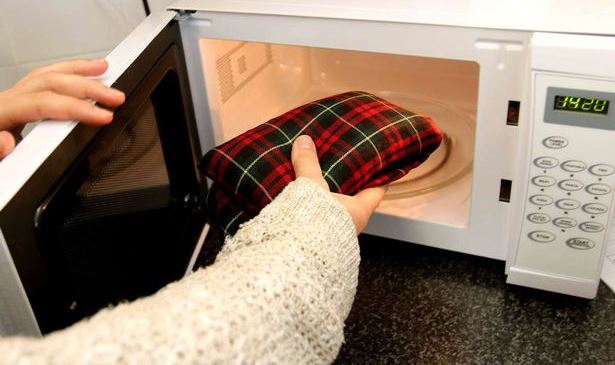Warm Comforts: The Safe Way to Heat Up a Wheat Bag for Your Family
Hello there, wonderful caregivers! Let’s face it, life can get pretty hectic with little ones running around, and sometimes, we all need a bit of warmth to soothe those everyday bumps and aches. A heat up wheat bag can be a cuddly comforter for those times, whether it’s to ease a sore muscle, warm a chilly bed, or simply to relax after a long day.
In this guide, you’ll find everything you need to know to heat a wheat bag safely and effectively. So, put on your learning caps and let’s dive into the cozy world of wheat bags!
What exactly is a wheat bag?
Firstly, let’s clear up any confusion about what a wheat bag is. Essentially, it’s a fabric pouch filled with wheat grains that can be heated in the microwave or sometimes in the oven, and then used to provide heat therapy. They come in many shapes and sizes, and are often fragranced with soothing herbs like lavender to enhance relaxation.
Why wheat bags are a household must-have
Wheat bags are loved for their ability to retain heat and provide *gentle* and *even* warmth. When heated correctly, they can help:
- Alleviate muscle stiffness and joint pain
- Reduce inflammation and swelling
- Promote relaxation and reduce stress
- Warm up beds on cold nights
- Comfort upset or colicky children
The Do’s and Don’ts of Heating Up Wheat Bags
But here’s the all-important part: safety! You want the snuggles without the trouble, so let’s get into the do’s and don’ts of heating your wheat bag.
Do:
- Follow the manufacturer’s instructions. Each wheat bag comes with its own guidelines for heating times and temperatures, and it’s crucial to adhere to these.
- Heat the bag in the microwave in increments, checking the temperature frequently to prevent overheating.
- Shake the bag afterwards to evenly distribute the heat.
- Always supervise children when they use a wheat bag, and make sure it’s not too hot for their delicate skin.
Don’t:
- Overheat the bag. This can lead to burns, potentially start a fire, and can damage the wheat bag, reducing its life span.
- Leave it to heat unattended. You should always be there to keep an eye on the bag while it’s heating.
- Use a wheat bag that’s showing signs of wear and tear, as this can lead to spillage of the wheat and potential injuries, especially in a hot environment.
- Place the wheat bag in the bed as a bed warmer when going to sleep, especially for infants or young children.
Now, before we delve deeper into the proper steps for heating your wheat bag, it’s essential to understand why these precautions are necessary. Wheat bags, if used improperly, can not only damage your microwave but can also pose a risk of burns or even fire. Staying informed about proper usage ensures a safe, cozy, and warm treat for your loved ones on those nippy evenings or when someone needs a bit of pampering.
Up next, we’ll unravel the specific steps you need to follow to get that wheat bag all snuggly and warm – the right way. So stick around, heat up that cup of tea, and let’s ensure every warm cuddle with your wheat bag is a safe one!

5 Things Parents Should Know in Preparing to Heat Up a Wheat Bag
Alright, you lovely bunch of super parents! You’re about to become the wizards of wheat bag warming with these essential tips to keep in mind. Here’s the scoop on what you need to know:
1. Know Your Microwave
Not all microwaves are created equal, and wattage varies significantly. Understanding your microwave’s power output is key to heating your wheat bag without incidents. If the instructions are based on a higher wattage and yours is less powerful, you may need to increase the heating time — but always in small increments to avoid overheating!
2. Wet Your Whistle… And Your Wheat Bag!
A little moisture goes a long way. Before popping the wheat bag into the microwave, sprinkle a touch of water over it or place a cup of water inside the microwave while heating. This adds moisture to the air and helps to prevent the wheat from scorching.
3. To Flip or Not to Flip?
That is a very good question. Halfway through the heating time, give your wheat bag a little flip and a jiggle. This helps to distribute the heat more evenly and prevents hot spots from developing. Remember, we want a warm hug, not a hot spot!
4. Conduct a Touch Test
After heating, do a quick touch test. Is it too hot to hold comfortably? Then it’s too hot for use, especially for children’s sensitive skin. Let it cool down a smidge, and then it’s ready for some warm snuggle time.
5. Store It Right
Once your wheat bag has dispensed all its warm cuddles, let it cool down completely before storing it in a dry, cool place. Keeping it away from damp areas prevents mold from growing, ensuring the bag is fresh for its next use. Also, store it in a clean container if it won’t be used for a while to keep it free from dust and other contaminants.
With these points under your belt, you’re on your way to becoming a bonafide wheat bag warming expert. Keep these nuggets of wisdom handy, and you’ll always be ready for those moments when your family needs a little extra warmth.
Remember, safety, love, and warmth go hand in hand. Ensure that each heartwarming experience with your wheat bag is coupled with a dash of caution, so you can continue to cherish those toasty memories without any worries.
And there you have it! You are now equipped with the know-how to heat those wheat bags safely. Go forth and fill your homes with the cozy contentment of a well-warmed wheat bag, and let the warmth of your love and care spread just as evenly as the heat in those cuddly little comforters. Be safe, be warm, and let the relaxation begin!
See more great Things to Do with Kids in New Zealand here. For more information see here
Disclaimer
The articles available via our website provide general information only and we strongly urge readers to exercise caution and conduct their own thorough research and fact-checking. The information presented should not be taken as absolute truth, and, to the maximum extent permitted by law, we will not be held liable for any inaccuracies or errors in the content. It is essential for individuals to independently verify and validate the information before making any decisions or taking any actions based on the articles.




